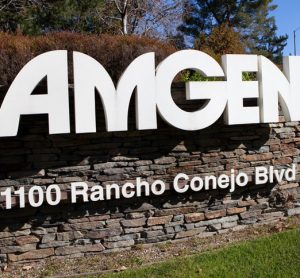Amgen announces top-line results of Phase 3 Sensipar®/Mimpara® EVOLVE(TM) trial
Posted: 8 June 2012 | | No comments yet
Amgen announced top-line results of the Phase 3 EVOLVE(TM) trial…


Amgen (NASDAQ:AMGN) today announced top-line results of the Phase 3 EVOLVE(TM) (EValuation Of Cinacalcet HCl Therapy to Lower CardioVascular Events) trial, which evaluated Sensipar®/Mimpara® (cinacalcet) for the reduction of the risk of mortality and cardiovascular (CV) events among 3,883 patients with secondary hyperparathyroidism (HPT) and chronic kidney disease (CKD) receiving dialysis. The primary endpoint of the study was time to the composite event comprising all-cause mortality or first non-fatal cardiovascular event, including myocardial infarction, hospitalization for unstable angina, heart failure or peripheral vascular event. Although patients in the Sensipar/Mimpara arm experienced numerically fewer composite primary events, the results were not statistically significant, and the trial did not meet its primary endpoint in the intent-to-treat analysis.
“Amgen embarked on the EVOLVE trial to understand whether treating secondary HPT with Sensipar/Mimpara could positively impact the high rates of mortality and cardiovascular events among patients with CKD receiving dialysis,” said Sean E. Harper, M.D., executive vice president of Research and Development at Amgen. “We thank the patients, caregivers and investigators for their participation and engagement in this landmark trial. EVOLVE will provide the nephrology community with important information.”
The most frequently reported adverse events in the Sensipar/Mimpara arm of the trial were consistent with the known safety profile of this therapy and included nausea, vomiting and hypocalcemia.
Detailed efficacy and safety analyses from this landmark study are ongoing and will be submitted for presentation at a major medical meeting later this year.
Sensipar/Mimpara is an oral calcimimetic agent approved for the treatment of secondary HPT in patients with CKD receiving dialysis.
EVOLVE Trial Design
EVOLVE was an international, randomized, double-blind, placebo-controlled Phase 3 study of 3,883 patients with secondary HPT and CKD receiving dialysis. The trial, the largest of its kind in patients with CKD receiving dialysis, was designed to determine if treatment with Sensipar/Mimpara, compared to placebo, decreases the risk of all-cause mortality and CV morbidity. The trial consisted of a 30-day screening phase, a titration phase with visits every 2 weeks, and a follow-up phase with visits every 8 weeks. Following the screening phase, patients were randomized to the Sensipar/Mimpara or placebo groups. Possible sequential doses of Sensipar/Mimpara or placebo included 30, 60, 90, 120, and 180 mg. Flexible use of traditional therapies, such as vitamin D derivatives and phosphate binders, were permitted in both groups.
About Secondary Hyperparathyroidism
Secondary hyperparathyroidism (HPT) is a common and serious condition that is often progressive among patients with CKD and it affects many of the approximately two million people throughout the world who are receiving dialysis. The disorder develops early as an adaptive response to declining kidney function when the parathyroid glands (four small glands in the neck) increase the production of parathyroid hormone (PTH) in an effort to maintain normal levels of calcium and phosphorus. Ultimately, excess PTH production proves inadequate for maintaining normal serum calcium and phosphorous levels. When kidney disease progresses to the point where dialysis is needed to sustain life, secondary HPT manifests as elevated PTH, calcium and phosphorus levels that, in turn, can lead to significant clinical consequences, including bone loss, skeletal fracture, and soft-tissue calcification. Although many patients with secondary HPT are not overtly symptomatic, bone pain, particularly when standing or when walking, achy and stiff joints, muscle weakness, and complaints of dry, itchy skin are common. Advanced disease is marked by very large parathyroid glands that may need to be removed by surgery.
About Sensipar/Mimpara (cinacalcet)
Cinacalcet is approved in more than 50 countries and marketed as Sensipar in the United States (U.S.), Canada, Australia and New Zealand and as Mimpara in the European Union and other countries. Sensipar/Mimpara is the first oral calcimimetic agent approved for the treatment of secondary HPT in CKD patients receiving dialysis. The therapy is also approved by the U.S. Food and Drug Administration, European Medicines Agency and Health Canada for hypercalcemia in patients with parathyroid carcinoma and severe hypercalcemia in patients with primary HPT who are unable to undergo parathyroidectomy. Sensipar/Mimpara binds to the calcium-sensing receptor, which causes the receptor to become more sensitive to extracellular calcium ions. This results in a drop in PTH levels by inhibiting PTH synthesis and secretion. In addition, the reductions in PTH lower serum calcium and phosphorus levels.
Secondary HPT Indication
Sensipar is indicated for the treatment of secondary HPT in patients with CKD on dialysis.
Primary HPT Indication
Sensipar is indicated for the treatment of severe hypercalcemia in patients with primary HPT who are unable to undergo parathyroidectomy.
Important Safety Information
Sensipar lowers serum calcium; therefore, it is important that patients are carefully monitored for the occurrence of hypocalcemia. Sensipar should not be initiated if serum calcium is less than the lower limit of the normal range. Significant reductions in calcium may lower the threshold for seizures. In the treatment of secondary hyperparathyroidism the most commonly reported side effects in clinical trials were nausea, vomiting, and diarrhea. In the treatment of primary hyperthyroidism, the most commonly reported side effects in clinical trials were nausea, vomiting, and paresthesia.
To see the full Sensipar Safety Information, visit http://pi.amgen.com/united_states/sensipar/sensipar_pi_hcp_english.pdf.



